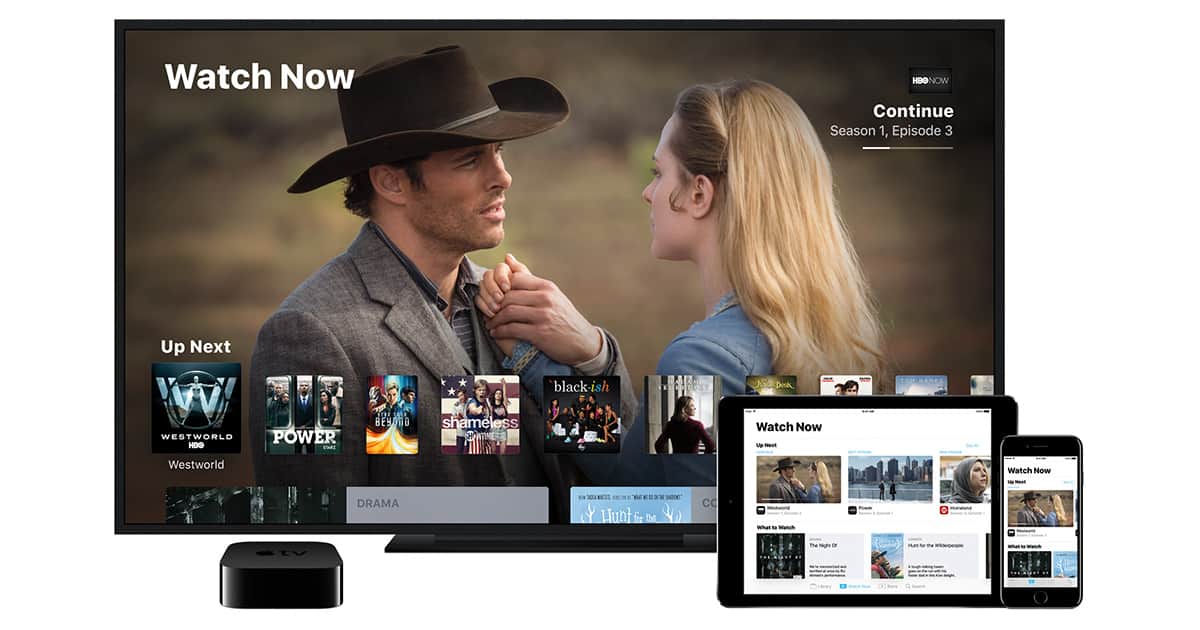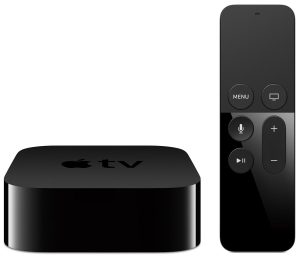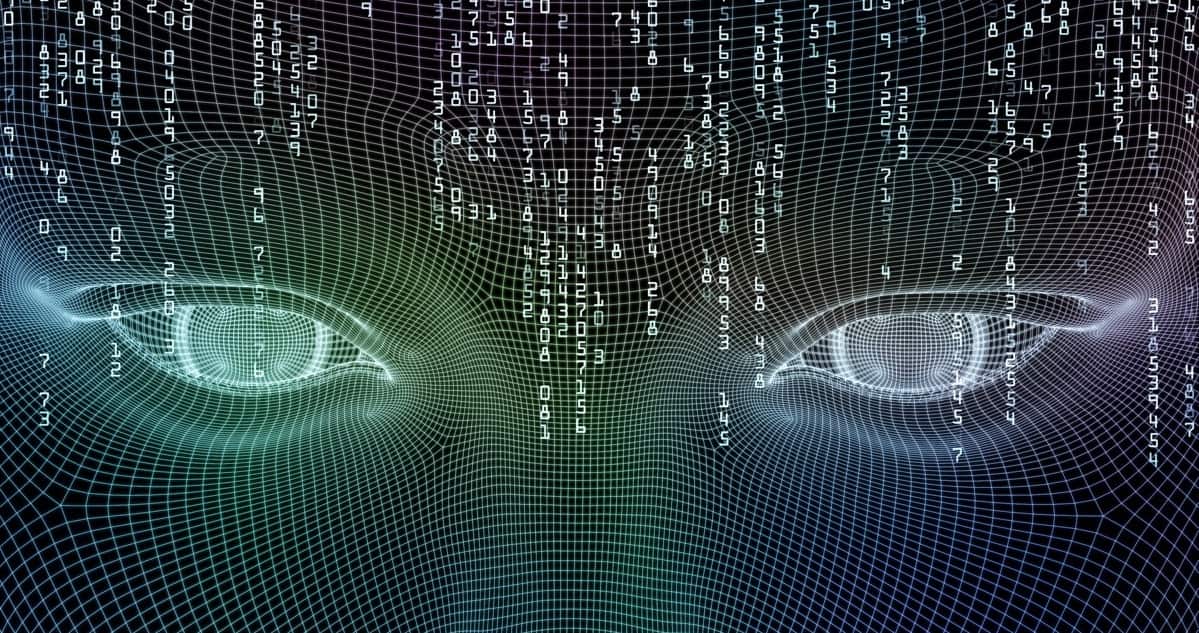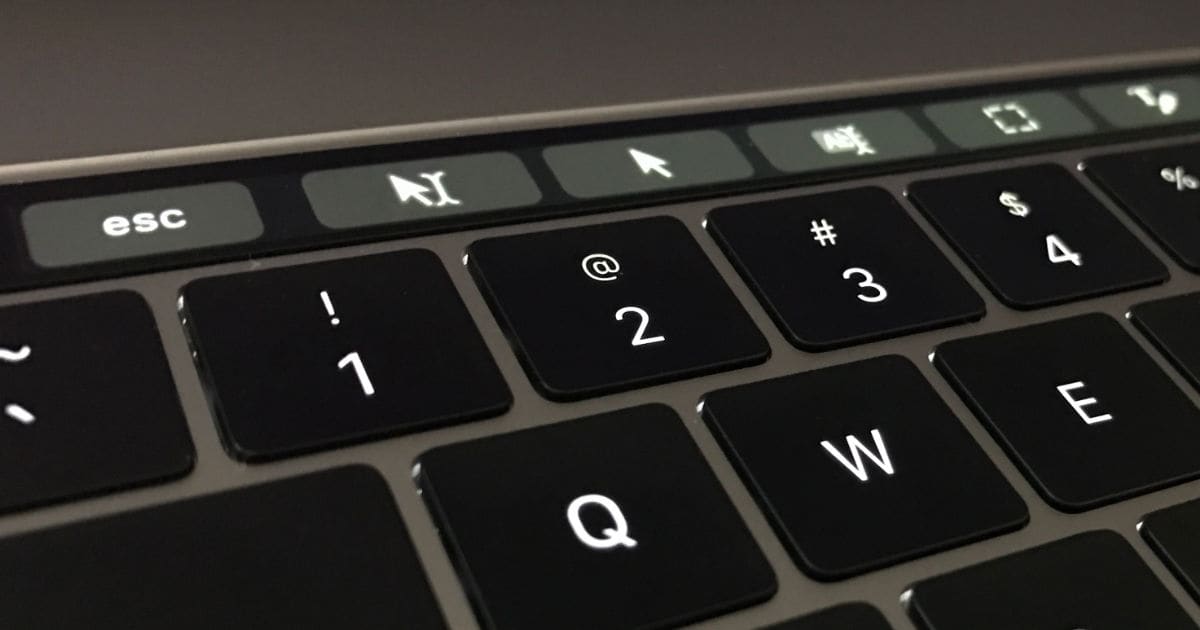Apple’s TV App Reveals its Plight with Television Industry
From time to time, I have read articles about Apple’s plight with its TV business. And I’ve written my fair share about that as well. But I’ve never seen as complete a diagnosis as this tour de force essay. It examines the deepest motivations of Apple, it’s clash with the entertainment industry, its successes and failures, and how that has, in turn, affected software design and customer expectations.

The new TV app for Apple TV shows what you’re currently watching, upcoming episodes, and suggestions.
Here’s this week’s focus article at The Verge. “Apple’s new TV app shows how painfully behind it is.” That title is deceptively simple for an article that goes into so much detail and casts so much light on the challenges Apple faces. Here’s a particularly good paragraph which ends with a particularly insightful, stinging quote.
Worse yet for Apple, it does not operate a streaming video service of its own and makes a set-top box that does nothing its competitors don’t already do, besides the robust games section of the App Store. It’s not for lack of trying. Apple has notoriously spent years trying to gain relevance in digital media, investing resources and countless failed software and hardware attempts to wrestle control away from content providers so it could offer its own solution. The TV app is just the latest potentially doomed attempt. That’s largely because it takes stellar ideas about how we should consume entertainment and smashes them against the immovable object that is the current video landscape. [Emphasis mine.]
That TV App
The recently released Apple TV app is the platform for this analysis. The article doesn’t even get into the headaches some customers have had, with the migration from the Videos app to the TV app, especially when they used a beta of iOS 10.2. The point made is one that’s a consensus in the community of observers. Without support for Netflix and Amazon Video, Apple’s TV app is confusing and disappointing. But Apple would rather, it seems, go out on a limb and ship the app, hoping they can work a deal with Netflix and Amazon later. Meanwhile, the customers and observers remain puzzled.
What this splendid article doesn’t cover in any detail is the fallout when it comes to hardware design. What I mean is that when Apple works so hard to insinuate itself into and seize control of a segment of the industry, all product design must pass through the lens of Apple’s overall agenda. That wasn’t always so.
That means that instead of “Fitting in and standing out,” Apple creates hardware and—more specifically—software that seeks to promote its own business goals. That’s in contrast to, say Roku, that simply builds delightful hardware that fits into the customer’s existing home entertainment system and adds identifiable value rather than frustration because of incomplete services.
But not all is lost for Apple. Author Nick Statt continues.
There is hope for Apple yet. The company is arguably the only player in a position to offer a democratic, holistic viewing experience that ties everything to a single source. Amazon, the company perhaps closest to that goal, makes both hardware and software. That means it tends to promote its own products over competitors’. Cable companies, too, are self-interested and prone to resisting change that could hurt their businesses. That means the products those companies produce, whether on-demand apps or live TV, are often ugly, hard to use, and rarely if ever play nice with others.
My own perspective over the years has been that Apple should make the coolest hardware money can buy and focus on fitting in with the TV hardware industry, solving real connectivity, video and and audio issues. Once customers and videophiles declare that Apple is the only company we need in addition to a 4K/UHD/HDR TV, they they’ll have a lot more leverage. But that means a fanatic attention to the broad scope of home theater hardware and connectivity issues, so often tackled by other companies without Apple’s resources or UI/UX expertise. So far, Apple doesn’t want to go that route.

The 4th generation Apple TV. Will it blend?
Some have said that Apple is playing the long game. That may be true. But if the price to pay is an on-going frustration with Apple’s mostly failed attempts to seize control, as it did with music, then one has to ask why Apple keeps beating its head against that immovable object. As Ken Segall has said, “it’s the [Apple] products that do the talking.” So far, Apple TV has been somewhat muted.
Next page: The news debris for the week of December 12th. AI Agents are here now and changing our lives.
Page 2 – News Debris for the Week of December 12th
How AI Agents are Changing our Lives

You may have seen articles that poke fun at language translations from yesteryear. Sometimes by humans and sometimes by machine. Here’s an example, the original English.
“Pickpockets beware! Undercover police working in this area! In July three pickpockets received sentences of over four years!”
Translated into Spanish and back to English, it became…
The pickpockets are kept. Police of the inner deck that works in the area. In July three the pickpockets received prayers of the prison over of four years.
In fact, the classic (and often humorous) test of a computerized translation engine would be to translate some English text into a language that uses a different alphabet (Hebrew) or even one that’s pictogram-based (Japanese), and translate back to English, as in the above example. That’s a serious challenge.
However, significant progress has been made by Google in this area. For example, see if you can figure out which of these texts, translated into Japanese and back to English was the original and which was done by Google’s new AI driven translator.
1. Kilimanjaro is a snow-covered mountain 19,710 feet high, and is said to be the highest mountain in Africa. Its western summit is called the Masai “Ngaje Ngai,” the House of God. Close to the western summit there is the dried and frozen carcass of a leopard. No one has explained what the leopard was seeking at that altitude.
or …
2. Kilimanjaro is a mountain of 19,710 feet covered with snow and is said to be the highest mountain in Africa. The summit of the west is called “Ngaje Ngai” in Masai, the house of God. Near the top of the west there is a dry and frozen dead body of leopard. No one has ever explained what leopard wanted at that altitude.
Did you spot the computer’s only error in #2?
Intrigued? Would you like to learn more about “How Google used artificial intelligence to transform Google Translate, one of its more popular services — and how machine learning is poised to reinvent computing itself.”?
This long but glorious article at The New York Times Magazine, “The Great A.I. Awakening” will tell you everything you ever wanted to know about how AI is revolutionizing our society.
As an aside, how do companies train their AI system to do better with speech? See: “Why Google, Microsoft and Amazon Love the Sound of Your Voice.”
Related
All this is what Siri is up against.
More Debris…
One has to wonder what Apple’s Craig Federighi was thinking when he showed emojis during the Touch Bar demo on October 27. Several times, now, I’ve run across the Touch Bar being ridiculed as an Emoji gimmick. (Perhaps the laughter and notoriety comes first, then the serious uses later.) In any case, Anthony Frausto-Robledo goes ahead and asks the serious question: “Just An Emoji Gimmick?—CAD Developers Weigh In On Apple’s Touch Bar.”
If you’ve been pondering a new 2016 13-inch MacBook Pro with Touch Bar, this review will either have you fuming or laughing….or something. “Apple 13″ MacBook Pro review: the best computer you shouldn’t buy.”

Inventive apps will provide MacBook Pro Touch Bar support.
It seems that just about every Apple OS update has a crucial security fix rolled into it these days. macOS Sierra 10.12.2 was no exception. Pro tip: update now.
One of the challenges for Apple these days, I think, is that a very high level of technical development has percolated into Apple’s newfound competitors. That is, as Apple broadens its product line and moves into, say, AR, wearables and cars, it runs smack into companies that can effectively partner, combine their expertise, and give Apple some serious competition. See, for example, “BMW Hooks Up With IBM Watson For AI Car Research.”
Neil Cybart does some really good analysis of Apple. In this case, he’s turned his attention to the Apple Watch. “The Elephant in the Smartwatch Room.” This article may change your mind about the Apple Watch’s future prospects.
Finally. this last week on TMO’s Daily Observations podcast, Jeff Gamet, Kelly Guimont and I talked about what Apple could do, next steps, to genuinely help families with their storage and backup issues. Jan Dawson has taken the discussion farther. “Tech Should be Helping Families.”
______________________
Particle Debris is a generally a mix of John Martellaro’s observations and opinions about a standout event or article of the week (preamble on page one) followed on page two by a discussion of articles that didn’t make the TMO headlines, the technical news debris. The column is published most every Friday except for holidays.
0 Response to "Apple’s TV App Reveals its Plight with Television Industry"
Post a Comment